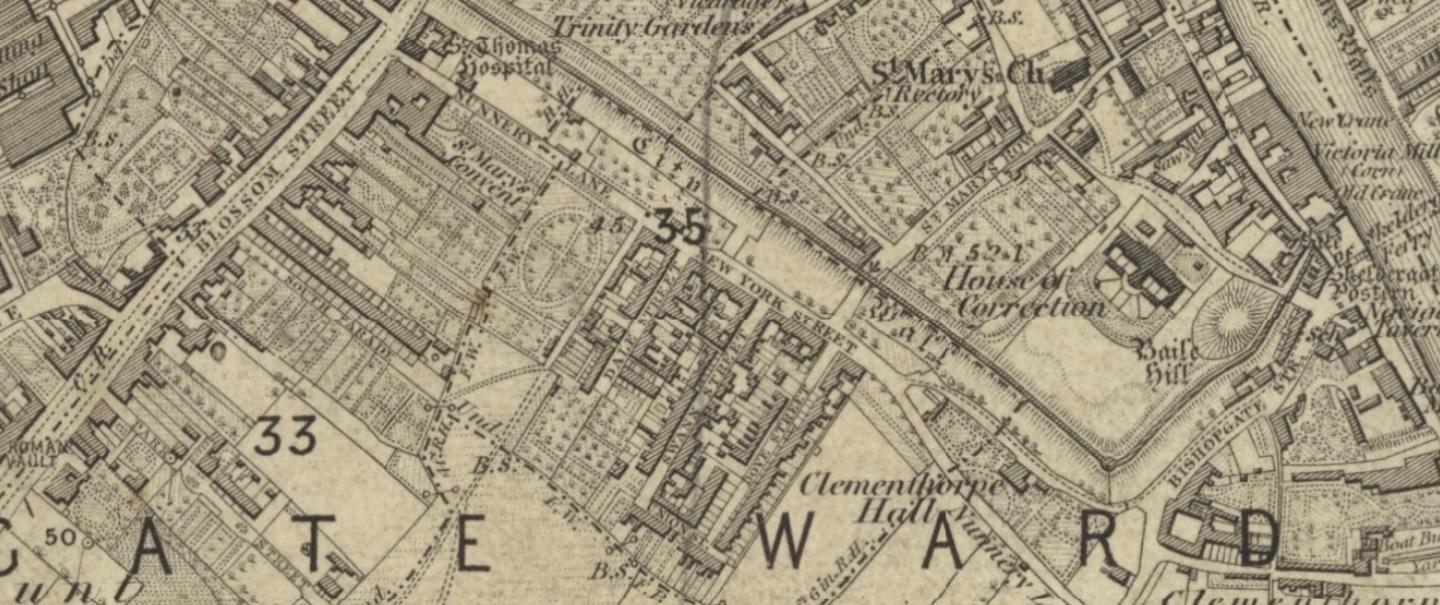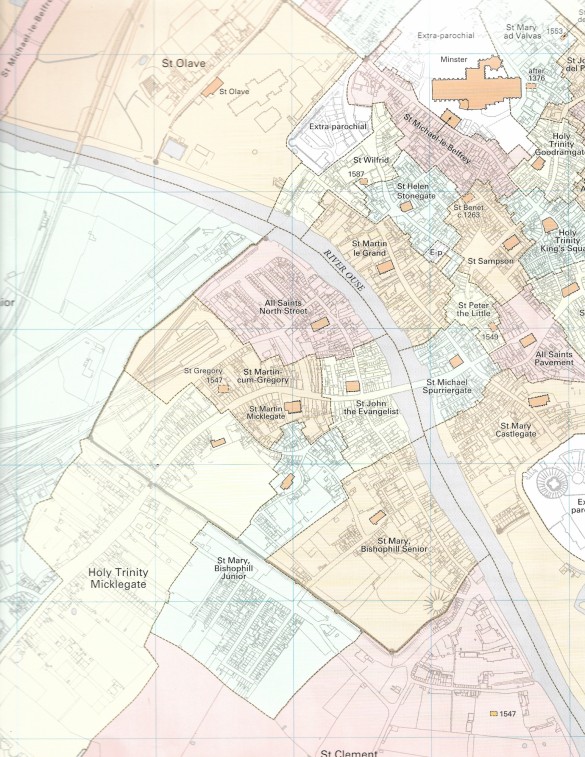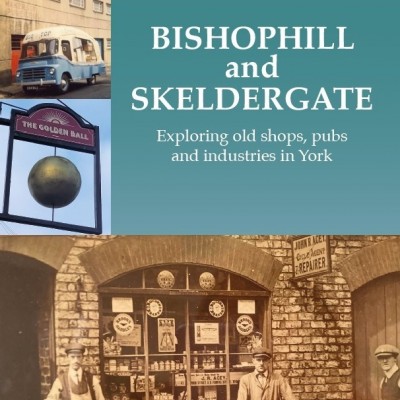25th August 2019
Making Ends Meet: exploring mid-nineteenth century poverty in our area
Judith Hoyle reports on our poverty project:
Our latest research project explores mid-nineteenth poverty locally, focusing on the St Mary Bishophill Junior (SMBJ) parish during the period 1839-43. This includes streets outside the City Walls such as Nunnery Lane, Dale Street, Dove Street and Swann Street.
We examine the role of outdoor relief - publicly-financed poor relief - distributed in kind or in money (or in a combination of both). This allowed poor people to remain in their own homes.
This is the first in a series of posts that reveal our findings. Future ones look at:
-
Who lived in Dale Street, Dove Street and Swann Street?
-
What work did they do?
-
Who applied for relief and what did they receive?
 Extract from map of York showing the parish of St Mary's Bishophill Junior, OS six inch map Yorkshire 174 surveyed 1846-51; pub. 1853. See https://maps.nls.uk/view/
Extract from map of York showing the parish of St Mary's Bishophill Junior, OS six inch map Yorkshire 174 surveyed 1846-51; pub. 1853. See https://maps.nls.uk/view/
The 1840s was a period of rapid growth. The population of York Municipal Borough more than doubled between 1801 and 1851, often propelled by low agricultural wages in surrounding rural areas. The structure of employment was pre-industrial, with a large number of domestic servants, tailors, milliners, dressmakers and shoemakers. Railways still only provided a small number of jobs.
Under the Poor Law Amendment Act of 1834 parishes were grouped into unions, each union administered by a Board of Guardians. The Act intended to introduce a range of changes to the type of assistance provided for the poor. Only those in dire circumstances were to receive assistance, and this in the form of board and lodging within a workhouse. Relief to people in their own homes was to cease. The Act was meant to save money and address what was seen as inefficient and overly generous practices of the Old Poor Law. However, the Act met local resistance, and many of its central ideas, such as the abolition of out-relief, did not come to pass.
The operation of the new Poor Law became the responsibility of the York Poor Law Union (PLU), which covered 80 parishes. Decisions on relief were delegated by the Board of Guardians to the Relieving Officer, at this time Richard Leaf.




